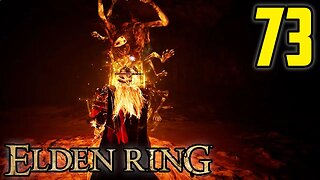Premium Only Content

That Time We Had A Planet Vulcan 🖖🏻
Patreon - https://www.patreon.com/user?u=37594401
Buy Me A Coffee? - https://www.buymeacoffee.com/whats.next
Donate With Cash App - https://cash.app/$YTpayments
Get Mentioned In Future Videos By Joining PATREON For As Little As $5 A Month
(and gain access to DOZENS of videos!)
Support Direct Improvements To The Channel With BUY ME A COFFEE
Or Make Direct Contributions With No Strings Attached With CASH APP
WANT MORE GREAT CONTENT?
SUBSCRIBE 2 THESE GREAT CHANNELS!
Vega Astro - https://www.youtube.com/channel/UCejLQCRfKR1XAmDeRRv3ifA
Terran Space Academy - https://www.youtube.com/channel/UCGzgxO2YKjk9yYKLwBjyeVA
Mars Matters - https://www.youtube.com/channel/UCPFLOxf5-AgE0QlaXhzol_Q
Darkest Child A by Kevin MacLeod is licensed under a Creative Commons Attribution 4.0 license. https://creativecommons.org/licenses/by/4.0/
Source: http://incompetech.com/music/royalty-free/index.html?isrc=USUAN1100783
Artist: http://incompetech.com/
Vulcan /ˈvʌlkən/[2] was a theorized planet that some pre-20th century astronomers thought existed in an orbit between Mercury and the Sun. Speculation about, and even purported observations of, intermercurial bodies or planets date back to the beginning of the 17th century. The case for their probable existence was bolstered by the French mathematician Urbain Le Verrier who, by 1859, had confirmed unexplained peculiarities in Mercury's orbit and predicted they had to be the result of gravitational influences of another unknown nearby planet or series of asteroids. A French amateur astronomer's report that he had observed an object passing in front of the Sun that same year led Le Verrier to announce that the long sought after planet, which he gave the name Vulcan, had been discovered at last.
Many searches were conducted for Vulcan over the following decades, but despite several claimed observations, its existence could not be confirmed. The need for the planet as an explanation for Mercury's orbital peculiarities was later rendered unnecessary when Einstein's 1915 theory of general relativity showed that Mercury's departure from an orbit predicted by Newtonian physics was explained by effects arising from the curvature of spacetime caused by the Sun's mass.
In 1915 Einstein's theory of relativity, an approach to understanding gravity entirely differently from classical mechanics, removed the need for Le Verrier's hypothetical planet.[3] It showed that the peculiarities in Mercury's orbit were the results of the curvature of spacetime caused by the mass of the Sun.[27] This added a predicted 0.1 arc-second advance of Mercury's perihelion each orbital revolution, or 43 arc-seconds per century, exactly the observed amount (without any recourse to the existence of a hypothetical Vulcan).[28] The new theory modified the predicted orbits of all planets, but the magnitude of the differences from Newtonian theory diminishes rapidly as one gets farther from the Sun. Also, Mercury's fairly eccentric orbit makes it much easier to detect the perihelion shift than is the case for the nearly circular orbits of Venus and Earth. Einstein's theory was empirically verified in the Eddington experiment during the solar eclipse of May 29, 1919 when photographs showed the curvature of spacetime was bending starlight around the Sun. Astronomers generally quickly accepted that a large planet inside the orbit of Mercury could not exist, given the corrected equation of gravity.[25]: 220
Today, the International Astronomical Union has reserved the name "Vulcan" for the hypothetical planet, even though it has been ruled out, and also for the Vulcanoids, a hypothetical population of asteroids that may exist inside the orbit of the planet Mercury. Thus far, however, earth- and space-based telescopes and the NASA Parker Solar Probe have detected no such asteroids. While three Atira asteroids have perihelion points within the orbit of Mercury, their aphelia are outside that orbital path, therefore they cannot be defined as 'vulcanoids', which would require wholly intra-mercurian circular orbital trajectories, which none of them possess.
Vulcan (also known as Vulcan/Vulcanis A II, Nevasa II or 40 Eridani A II) is a planet, the second planet in the 40 Eridani star system, in orbit of the star 40 Eridani A. A class M desert planet, Vulcan is inhabited by the Vulcan civilization, who refer to their world as T'Khasi, Minshara or Ti-Valka'ain.
As the Vulcan homeworld, Vulcan was the capital planet of the Confederacy of Vulcan, and a founding world in both the Coalition of Planets and United Federation of Planets. (Last Unicorn RPG modules: The Way of Kolinahr, Planets of the UFP; Decipher RPG module: Aliens; ST references: Star Charts, The Worlds of the Federation; ENT novel: Kobayashi Maru)
-
 10:27
10:27
Tactical Advisor
22 hours agoDMR or SPR for Civilian Use?
6.62K2 -
 8:21
8:21
DEADBUGsays
22 hours agoThe Crossbow Killer
3.43K6 -
 8:40
8:40
Tundra Tactical
17 hours ago $1.50 earnedThe Executive Order Wishlist.
6.49K1 -
 7:22:52
7:22:52
SpartakusLIVE
16 hours agoSaturday SPARTOON Solos to Start || Duos w/ StevieT Later
94.7K2 -
 28:40
28:40
SLS - Street League Skateboarding
8 days agoTOP MOMENTS IN WOMEN’S SLS HISTORY! ALL THE 9’s - Rayssa Leal, Leticia Bufoni, Chloe Covell & more…
53.5K11 -
 2:03:03
2:03:03
The Connect: With Johnny Mitchell
14 hours ago $2.09 earnedHow Mexican & Chinese Cartels Control Illegal Marijuana Cultivation In America Using SLAVE Labor
8.92K3 -
 14:46
14:46
Mrgunsngear
15 hours ago $1.02 earnedPrimary Arms GLx 1x Prism With ACSS Reticle Review
8.14K5 -
 22:37
22:37
Degenerate Plays
14 hours agoI'm A Psychic Now - Elden Ring : Part 73
3.03K -
 2:32:02
2:32:02
Jamie Kennedy
8 hours agoEp. 195 Horror Legend Barbara Crampton
4.86K -
 23:00
23:00
Exploring With Nug
1 day ago $32.91 earnedHis Truck Was Found Crashed in the Woods… But He’s Gone!
135K8